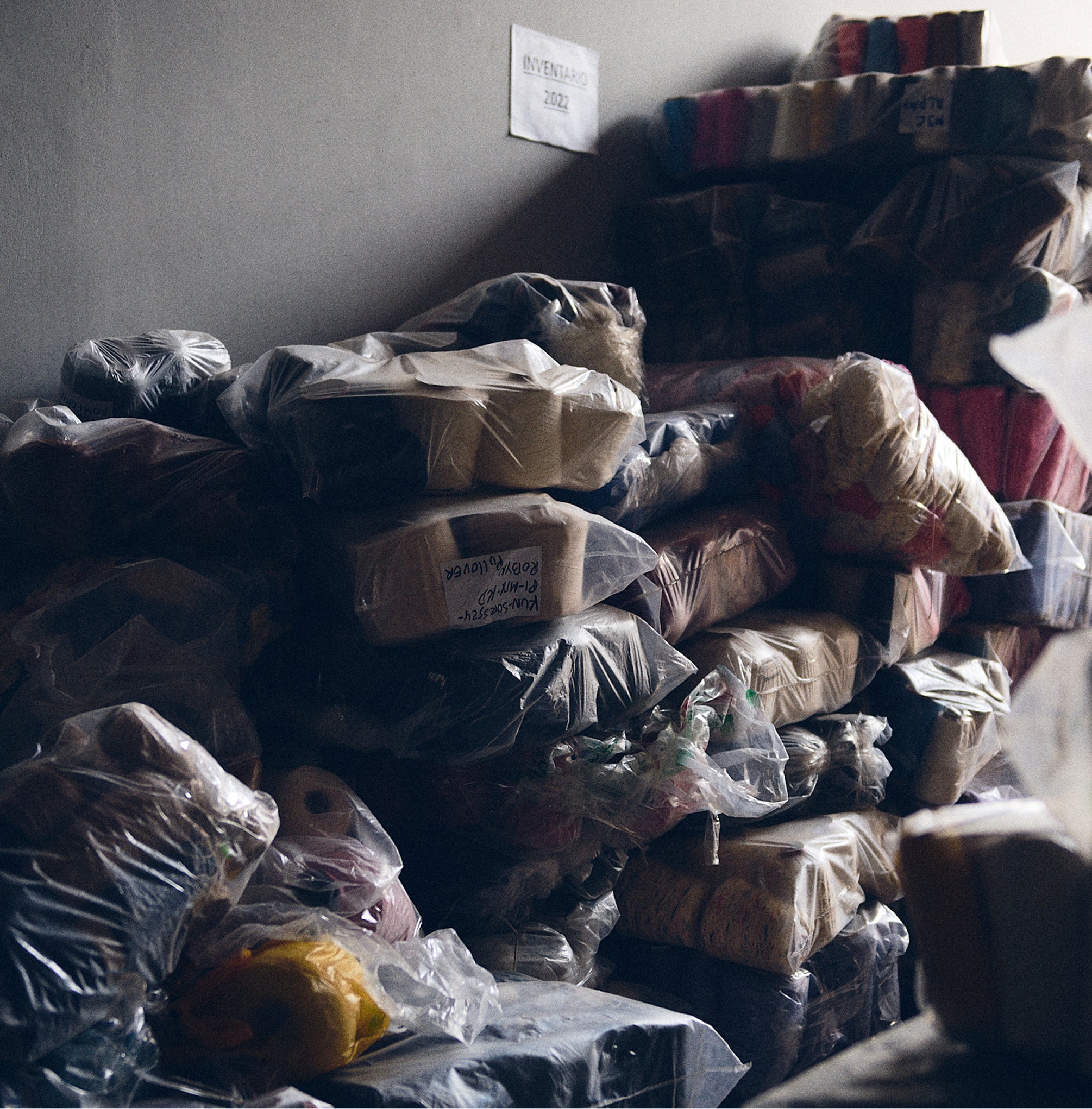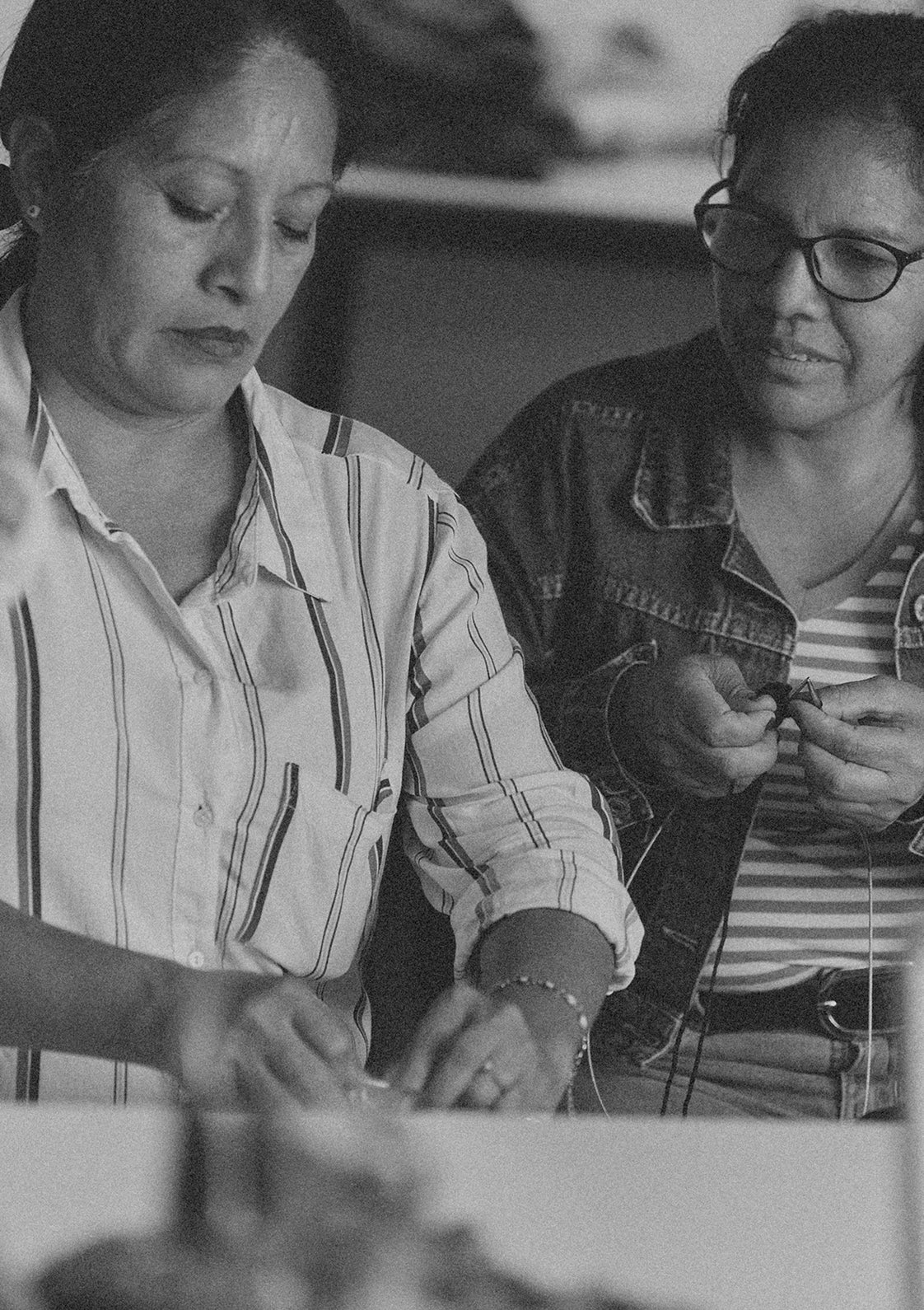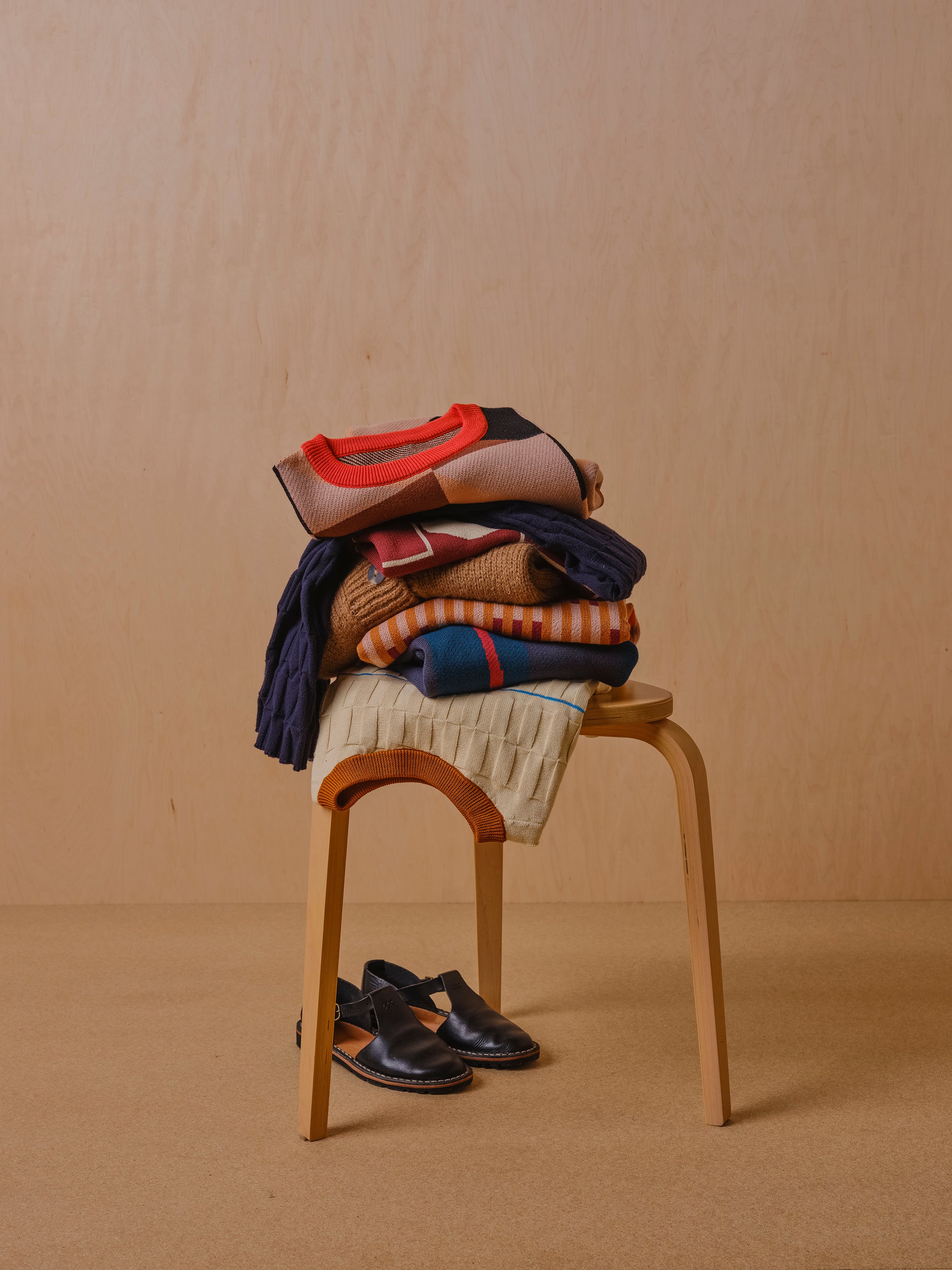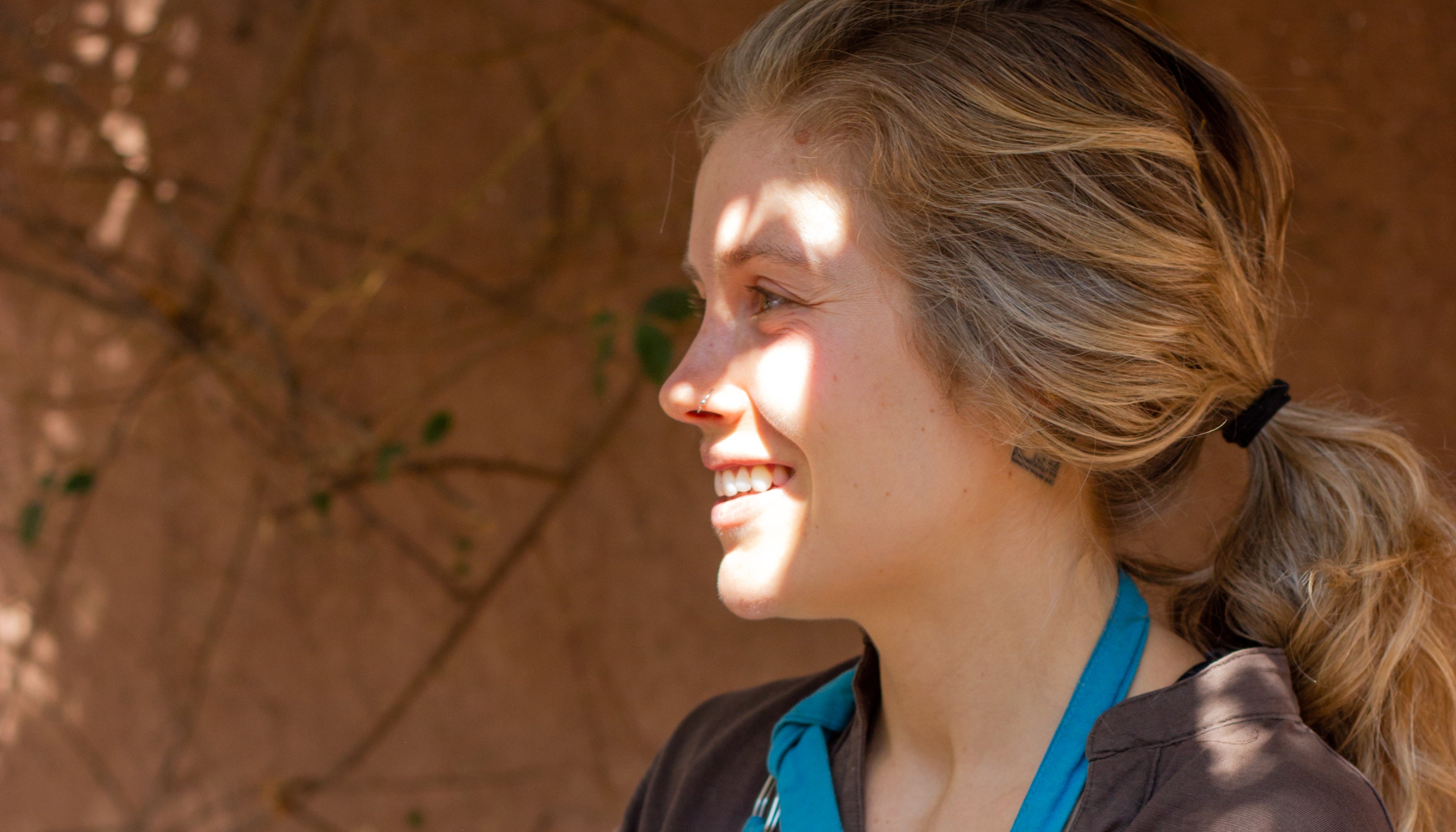Here at The Endery we’re big fans (and friends) of Dana from Pinchinku Fibers. What’s not to love about naturally dyed yarn? Dana has a beautiful workshop in the Sacred Valley, near Cusco in Peru. Here she shares all about being a small business owner and the joys of working with some seriously old dyes - oh, and she has the cutest team, ever!
The Endery: Tell us about yourself.
Dana Blair: In a nutshell >> cultural Anthropologist, Hawaii born and Pennsylvania raised, South America “adopted” est. 2010, avid trail runner, lifelong pianist, wine imbiber and passionate wander-luster.
With all my other time, I work with yarn, making naturally dyed rainbows and aspiring to be a more accomplished knitter. 
TE: What inspired you to set up your business?
DB: If traditional crafts do not support artisans financially, they will be lost to time. Very few artisans live comfortably from their work and I’ve seen firsthand that poverty doesn’t leave time for hobbies.
I felt frustrated and often discouraged during my years working with backstrap loom textiles because we never had enough sales. Always scraping and inventing to make ends meet. There wasn’t market demand for the product, which meant we weren’t actually offering the women what they needed e.g. an income.
Without needing to do much digging, I knew that there was a lack of naturally dyed yarn in Peru. People came through looking for it all the time. I’d soon learn that it was hard to come by anywhere, not just Peru. And that’s where I found the demand for a product that the women and I could supply.
Angela, Santusa and Leonarda are the founding artisans of our team, and they are all earning fair, stable wages for their work with natural dyes and traditional fiber arts. That was the inspiration for Pichinku and we’re making it a reality every day at our workshop.
TE: How does being a female entrepreneur excited and challenge you?
DB: Woohoo would this question go well with a bottle of Malbec!
Female entrepreneurship is all the more exciting, challenging and “rip your hair out” frustrating in Peru than I can imagine it would be back home. Machismo is still all too present in everyday society here, not to mention some rather disagreeable stereotypes directed toward young blonde foreigners.
But I found a stronger sense of self and determination in the face of that push back. In particular wanting to be a powerful female role model for the girls.
TE: What are your top tips to budding women who want to start their own business?
DB: When I graduated from university, I believed deep down in my core that I was this burning hot commodity launching into the workplace. No doubt in my mind that every company from San Fran to NY would snatch me up. Then I submitted 40+ job applications and just a handful even deigned to reply. Not a single interview in the US.
My top tip >> you’re the only one that has to believe that you’re capable of achieving your dreams. No matter how many people say “no”, shut the door in your face or simply ignore you.
For example: did anyone really think that starting a naturally dyed yarn company in Peru was a good idea? I doubt it. But then I raised $31k on Kickstarter to fund Pichinku. That happened in only 12 days with 300+ backers, most of whom were perfect strangers. That didn’t happen because I doubted my own dream.

TE: Why is craft important in today’s society do you think?
DB: Handmade items have identity. They tell stories of families and entire civilizations that can stretch back thousands of years. In a very physical and cognizant way, I feel that we would lose our ancestry if we were to lose craft.
TE: Tell us something interesting about yourself that most people don’t know.
DB: When I was around 8 years old, my mom taught me hula, the traditional dances of Hawaii. I’m not a very skilled dancer but it’s something that I’ve truly loved doing all my life. Re: “that most people don’t know” >> just now, writing these responses, was the first time that my fiancée saw me hula!
TE: How do you feel wearing a handmade garment as opposed to something mass produced?
DB: An excellent example is my “The Everwhere Beanie” from The Endery! Seriously >> not just for the sake of this interview. When I opened the package, I could feel the love and creativity that my friends put into its production. That it was limited edition, sustainably made, helped another maker continue to create. It made me feel part of something. Safe to say, I don’t feel that about my GAP jeans.
TE: Do you have any ‘leftovers’ in your business model and what do you do with them?
DB: We’ve been getting more and more creative this year with our “leftovers”. Odd numbered or “slightly off color” skeins are upcycled for pompoms, tassels, woven bracelets, pillow stuffing, you name it. I can’t remember a single skein that we’ve thrown away.
TE: What is your experience with alpaca?
DB: There was a time after moving to Cusco when it seemed that anytime that someone who knew me saw an alpaca, it made them think of me. Interesting and unexpected. I guess my frolicking in the Andes with alpacas had something to do with. Side note: I was also working in the Andes, not just frolicking (..sometimes).
My experience with alpaca is that it’s become my preferred material to work with, both for the Pichinku collection and my personal knitting projects. My first 4 years in Cusco were spent working with backstrap loom textiles, many of them woven with handspun alpaca yarn. As an Anthropologist, the centuries-old traditions captivated me. Not just weaving but the legacy of alpacas in Andean culture and its superior quality to other fibers: flame retardant, water repellant, lanolin free, snuggly super warm.
TE: And finally, what is your favorite piece from The Endery’s Alpaca Series I?
DB: I’m smitten with the “Bold Stripe” sweater in “Coral” (..and am saving to buy one)! I’ve always wanted to be more adventurous with my wardrobe but have accepted that I’m a basics girl. Simple cuts, a bit oversized and light on motifs. This piece strikes me as the perfect combination of that with “shake it up” pops of color.

Read more
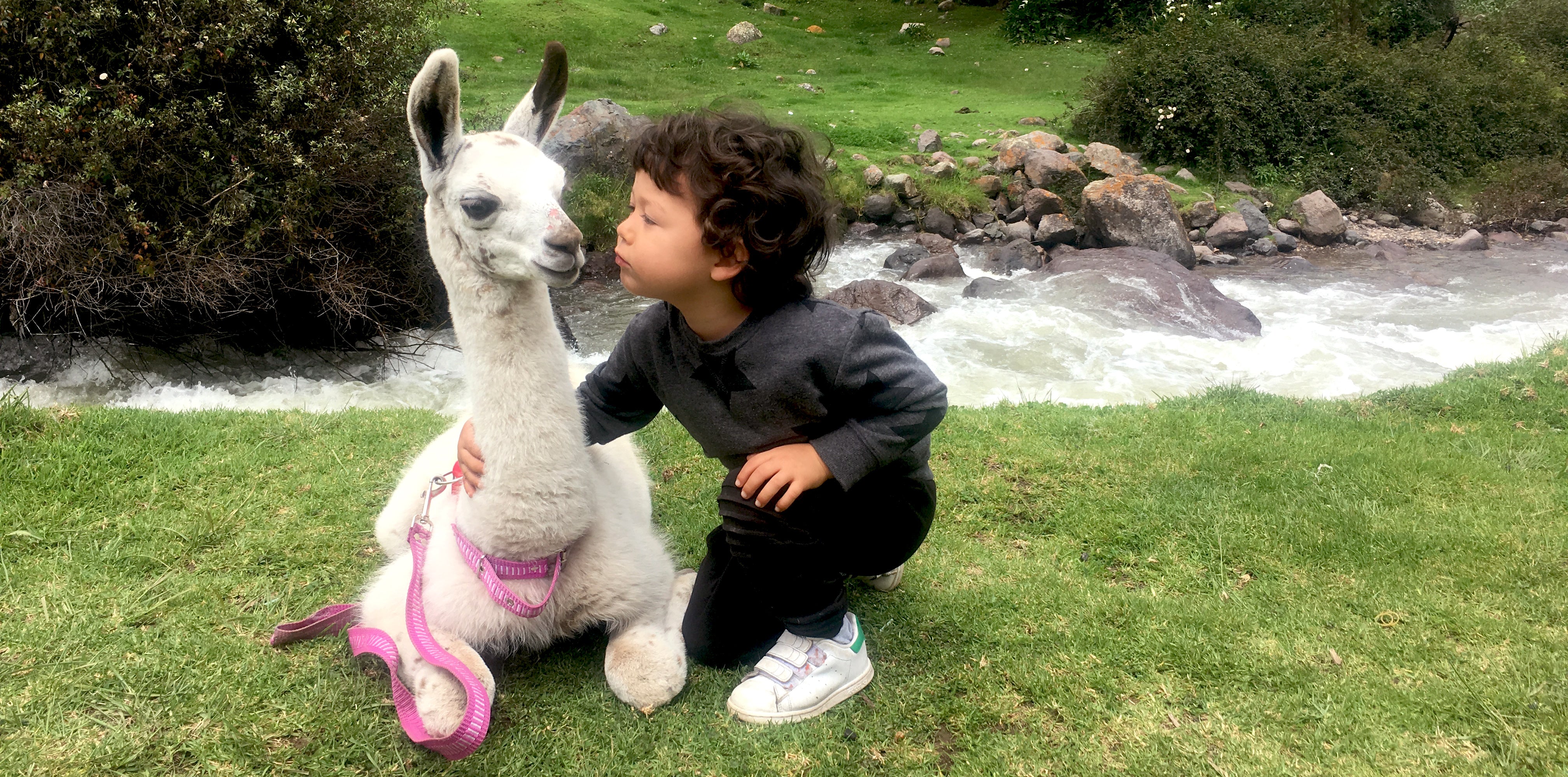
With Thanksgiving around the corner, I wanted to share a little pro tip with you guys that’s had a major impact on the quality of my life, in the hopes it might do the same for you. Since a lot of ...
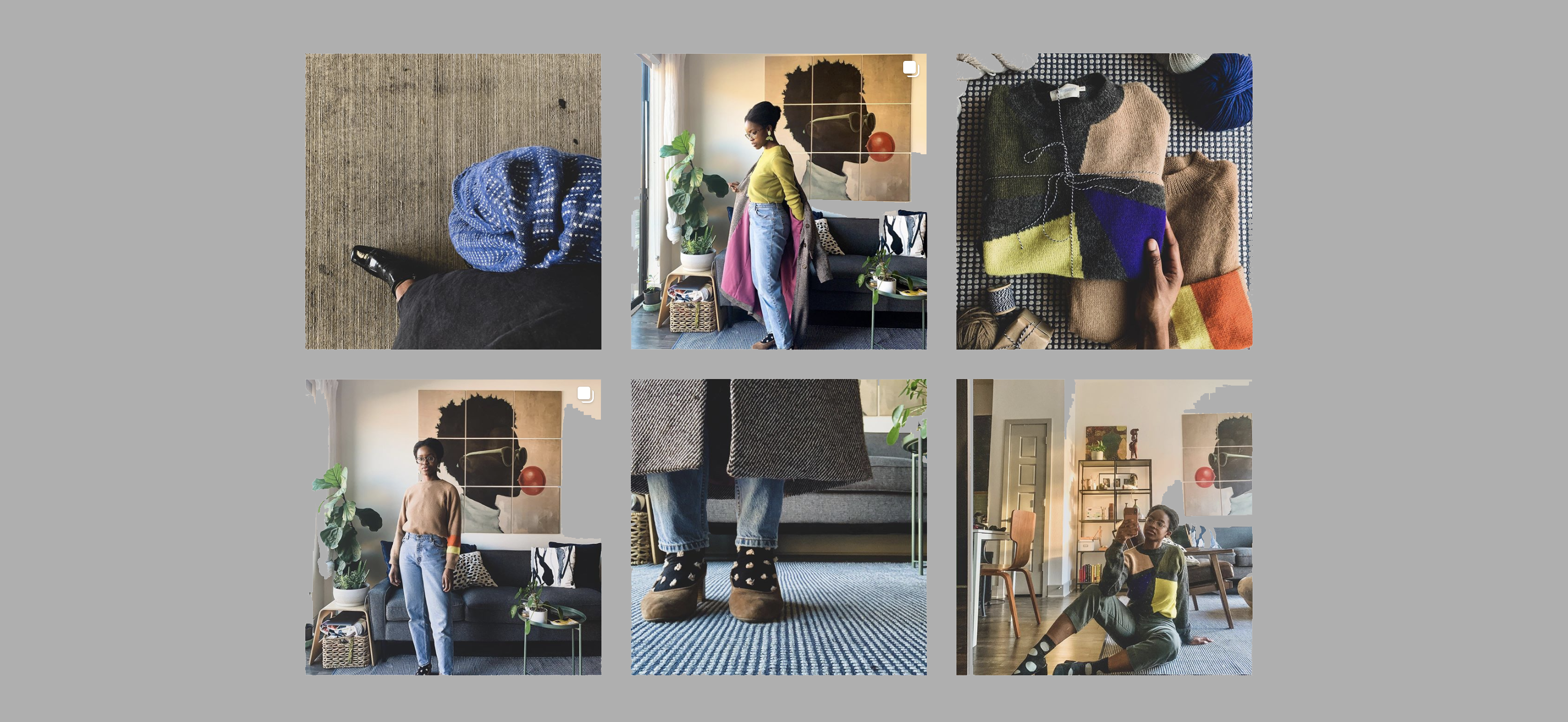
To say we’re obsessed with Abolaji Ogundele - aka @abolajiooo - is an understatement. She has a real eye for color and design, and makes (or buys second hand) pretty much everything she owns. She’s...




